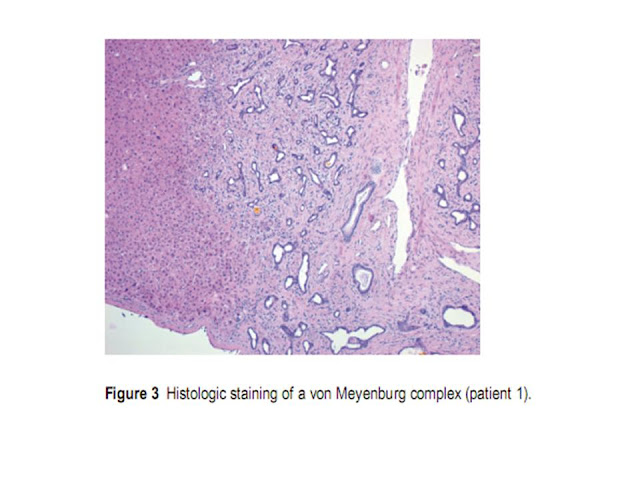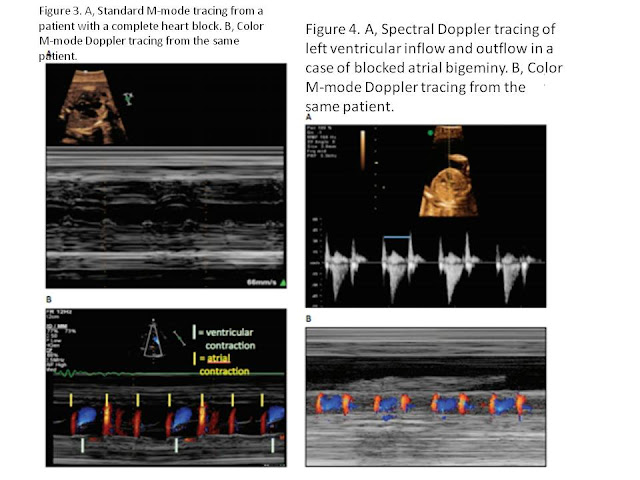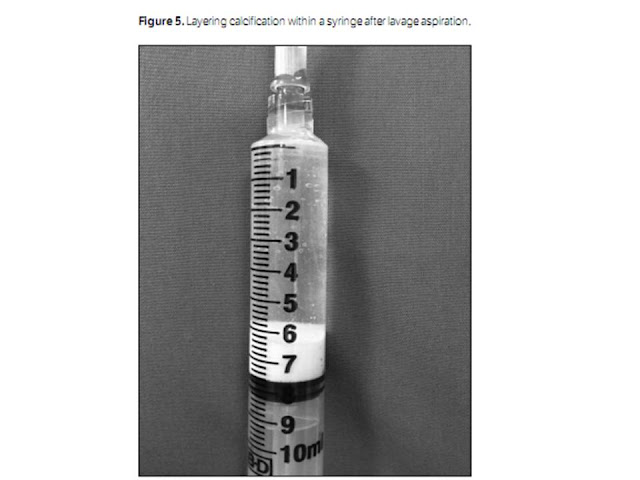Abstract
Objectives—Triple-negative breast cancer (TNBC) is known to have unique molecular, clinical, and pathologic characteristics. The growth pattern of this cancer may also affect its appearance on sonography. Our study evaluated the sonographic features of TNBC according to the American College of Radiology Breast Imaging Reporting and Data System sonographic classification system and compared these features with those of non-TNBC.
Methods—Data from 315 consecutive breast cancer cases were collected. The images were reevaluated by an examiner blinded to the patients’ characteristics and histologic results according to the Breast Imaging Reporting and Data System. The sonographic features of TNBC (n = 33) and non-TNBC (n = 282) were compared.
Conclusions—Triple-negative breast cancer and non-TNBC have different sonographic features. This finding can be explained by the pathologic profile of this breast cancer subtype. Some of the distinct sonographic criteria for TNBC are more likely to be associated with benign masses. Knowledge of the distinct sonographic features of TNBC would help the examiner avoid false-negative classification of this tumor type.
Discussion
Early Detection of TNBC
Triple-negative
breast cancer is known to be an especially aggressive subtype of breast cancer.
It is characterized by the complete absence of ER, PR, and HER2 over
expression. However, this definition only tackles the phenotype and merely
scratches the surface of the underlying processes within breast cancer cells. Nowadays, we have a much deeper insight into the molecular backgrounds of the different subtypes of breast cancer. From gene expression profiles, we have learned that there are at least 5 different intrinsic subtypes of breast cancer (luminal A, luminal B, claudin low, HER2 enriched, and basal like).5–7 Basal-like breast cancer is not synonymous with TNBC, although there is overlap, and most basal-like breast cancers are triple negative and vice versa. There is also a strong association with BRCA gene mutations in both TNBC and basal-like breast cancer.24 Although we are just starting to determine the molecular basis of TNBC, this type of breast cancer remains an extraordinary challenge for the clinicians who treat patients with TNBC in primary care.
Triple-negative
breast cancer is known to occur in younger woman, as shown in our study. The
overall outcome is poor because patients with TNBC are at higher risk of early
relapse and distant visceral metastases. Endocrine treatment for
endocrine-responsive disease and HER2-directed treatment in cases of HER2
overexpression provide the most effective available treatment for suitable
patients with breast cancer.25,26 Unfortunately, these treatment options do not exist for
patients with TNBC. Therefore, chemotherapy remains the only systemic option
for improving the prognosis and is usually necessary for patients with TNBC, as
illustrated in our data set. New therapeutic agents, such as poly(ADP-ribose)
polymerase inhibitors, are under development but have not yet been approved for
the treatment of TNBC.27 As shown in neoadjuvant trials, TNBC responds relatively
well to different chemotherapeutic agents, but paradoxically, the overall
prognosis remains poor, and whenever a pathologically complete response cannot
be achieved, the prognosis is even worse.28–30
Therefore,
early detection of this aggressive subtype of breast cancer has an important
prognostic relevance. Against this background, breast sonography plays an
essential and specific role by adding more diagnostic accuracy to the
mammogram. Lesion evaluation with sonography thus plays a crucial role in the
diagnostic and therapeutic pathway of patients with breast cancer.
False-negative results in evaluations of breast cancers may result in a delayed
diagnosis and a worse outcome.
Sonographic Features of TNBC in the
Literature
In
the literature, we found 3 related publications describing sonographic
characteristics of TNBC, although to our knowledge, there has never been a
systematic evaluation according to the BI-RADS sonographic classification and a
comparison to non-TNBC. Dogan et al31 reviewed 44 patients with TNBC. They noted that TNBC may be
occult on mammography and sonography and frequently has benign features. In
contrast, magnetic resonance imaging identified all 44 cases correctly and
showed features that had a high positive predictive value for malignancy. Ko et
al32 retrospectively reviewed mammographic and sonographic
findings of 245 patients from January 2007 to October 2008. Triple-negative
breast cancers occurred in 35.5% of the cases (n = 87), and these cancers were
more likely to have circumscribed margins, more likely to be markedly
hypoechoic, and less likely to show posterior shadowing. Kojima and Tsunoda33 reported on 88 patients with TNBC. In their retrospective
analysis of cases from January 2007 to April 2010, they observed that TNBC was
more likely to present as a mass and less likely to show attenuating posterior
echoes. These 3 studies already mentioned a few of the sonographic
characteristics, and the results correlate well with our own findings.
Sonographic Features of TNBC in Our Study
The
aim of our study was to scrutinize the distinct sonographic features of TNBC
according to the BI-RADS sonographic classification, and our results show that
TNBC is characterized by typical sonographic criteria that are to a certain
degree different from those of non-TNBC (Table 4). The shape of TNBC was more likely to be oval or
round, and the echogenic halo was observed significantly less often compared to
non-TNBC. Furthermore, Cooper ligaments were displaced (rather than disrupted)
significantly more often in TNBC. This finding can be explained by the typical
growth pattern of TNBC, which is described as a “pushing border” in the absence
of an infiltrating margin. This smooth appearance is usually associated with
noninfiltrative processes of the breast but also occurs in TNBC as an
expression of rapid tumor escalation. We believe that our observation on
sonography is the macroscopic correlate of this histopathologic behavior. This
kind of smooth mass margin has also been described for TNBC on magnetic
resonance imaging.34
The
pathologic phenomenon of a pushing margin at which the tumoredge shows a
circumscribed boundary also explains the elevated rate of lobulated or
microlobulated margins on sonography. The echogenic halo is an expression of a
desmoplastic response and inflammation. Desmoplasia is thought to be a critical
event in cancer progression and a prognostic indicator and is regularly found
in TNBC.35 We were notable to find a sonographic-morphologic correlate
for the desmoplastic reaction. On the contrary, an echogenic halo was observed
significantly less often in our TNBC group. We suppose that the aforementioned
rapid tumor progression dominates the appearance of the tumors on sonography.
Hence, desmoplasia is actually present in triple-negative tumors but has no
sonographic correlation.
The
particularly disordered growth of malignant tumors leads to an increase in
tissue layers with different impedances and consequently an increase in
reflected, absorbed, and scattered echoes. In invasive ductal carcinoma, a
trabecular appearance is common, and a syncytial growth pattern is rare. As a
result, malignant tumors are usually associated with posterior acoustic
shadowing. We found a significantly increased rate of posterior acoustic
enhancement (instead of shadowing, unchanged echoes, or a mixed pattern) in our
TNBC group. This feature is usually associated with benign nodules that are
growing in a regular and controlled manner or with cystic lesions. As shown in
recent studies, TNBC shows a syncytial growth pattern in about 56% of cases.36 In this pattern, tumor cells are closely apposed and
nestled against one another and lack distinct cytoplasmic membranes,
consequently forming a large syncytium. This growth pattern creates fewer
layers than the trabecular pattern and may therefore explain the improved
propagation of the ultrasonic waves.
Clinical Features of TNBC in Our Study
The
prevalence of TNBC in our study cohort was 10.5% and was slightly lower than
reported in the literature (11.2%–39.9% in certain ethnic groups).3,4 Because we did not select the cases and censoring due to
missing data was a random event, this decreased prevalence can be considered a
general effect due to the population that we serve in our community (97.6%
European white, 1.7% Central and East Asian, 0.4% African, and 0.3% other). It
might also be due to the strict definition of TNBC in our study, with a cutoff
for ER and PR levels of 1% or greater for endocrine responsiveness, whereas
other authors have used cutoffs of up to 10% or greater.4 However, our definition is consistent with the American
Society of Clinical Oncology/College of American Pathologists recommendations.37
We
observed a trend for higher breast density in the TNBC group. This result was
most probably biased by the unbalanced age distribution, with the TNBC group
being considerably younger than the non-TNBC group. Younger patients are more
likely to have dense breast tissue. Yang et al1 reported no correlation between triple negativity and breast
density in their age-adjusted collection of patients.
With
regard to the final tumor stage, there was no difference in the T
classification of the two groups. Regarding the N classification, we found a
significantly higher rate of positive axillary lymph nodes in the TNBC group.
As shown by previous studies, even small breast cancers tend to disseminate
axillary lymph node metastases if a biologically unfavorable type of breast
cancer is present. Maibenco et al38 reported an increasing rate of axillary lymph node
metastases with higher histologic grades. Most cases of TNBC are reported to be
grade 3, as found in our study. Furthermore, the intrinsic characteristics of
TNBC that are determined by its unique molecular profile are known to determine
its aggressive behavior, which may explain the increased lymph node involvement
in the TNBC group.
Limitations of Our Study
The
main limitation of our study was the relatively small sample size. Thus,
although we were able to show significant differences for some sonographic
features of TNBC and non-TNBC, for other features there was only a trend. We
believe that significant differences for these features could be revealed with
a larger sample size. Furthermore, we did not assess the combination of
characteristics because that approach was not planned. Another limitation was
the fact that only a single observer evaluated the sonograms. Data on
interobserver concordance were not generated. This factor should be
investigated further. An analogous study comparing other immunohistochemical
subtypes of breast cancer (eg, HER2 positive versus HER2 negative) would also
be beneficial. Investigation of the correlation with the intrinsic subtype
would also be interesting. We were not able to determine the intrinsic subtype
for our patients and thus were restricted to describing the TNBC phenotype.
Summary
We
found that TNBC has distinct sonographic features compared to non-TNBC. These
features can be explained by the typical growth pattern of this tumor type.
Therefore, TNBC may lack some of the characteristic criteria for malignancy and
may even mimic a benign lesion. Being familiar with this behavior would help
the examiner avoid false-negative classification of TNBC in the future.
FURTHER READING:
Study Divides Breast Cancer Into Four Distinct Types
By GINA KOLATA
The New York Times, Health
Published:
September 23, 2012
By GINA KOLATA
The New York Times, Health
Published:
September 23, 2012
In findings
that are fundamentally reshaping the scientific understanding of breast cancer, researchers have identified
four genetically distinct types of the cancer. And within those types, they found
hallmark genetic changes that are driving many cancers.
These discoveries, published online on Sunday in the journal Nature, are expected to lead to new treatments
with drugs already approved for cancers in other parts of the body and new
ideas for more precise treatments aimed at genetic aberrations that now have no
known treatment.
The study is the first comprehensive genetic analysis of breast
cancer, which kills more than 35,000 women a year in the United States. The new
paper, and several smaller recent studies, are electrifying the field.
“This is the road map for how we might cure breast cancer in the
future,” said Dr. Matthew Ellis of Washington University, a researcher for the
study.
Researchers and patient advocates caution that it will still take
years to translate the new insights into transformative new treatments. Even
within the four major types of breast cancer, individual tumors appear to be driven by their own sets
of genetic changes. A wide variety of drugs will most likely need to be
developed to tailor medicines to individual tumors.
“There are a lot of steps that turn basic science into clinically
meaningful results,” said Karuna Jaggar, executive director of Breast Cancer Action, an advocacy group. “It
is the ‘stay tuned’ story.”
The study is part of a large federal project, the Cancer Genome Atlas, to build maps of genetic
changes in common cancers. Reports on similar studies of lung and colon cancer have
been published recently. The breast cancer study was based on an analysis of
tumors from 825 patients.
“There has never been a breast cancer genomics project on this
scale,” said the atlas’s program director, Brad Ozenberger of the National Institutes of Health.
The investigators identified at least 40 genetic alterations that
might be attacked by drugs. Many of them are already being developed for other
types of cancer that have the same mutations. “We now have a good view of what
goes wrong in breast cancer,” said Joe Gray, a genetic expert at Oregon Health & Science University, who
was not involved in the study. “We haven’t had that before.”
The study focused on the most common types of breast cancer that
are thought to arise in the milk duct. It concentrated on early breast cancers
that had not yet spread to other parts of the body in order to find genetic
changes that could be attacked, stopping a cancer before it metastasized.
The study’s biggest surprise involved a particularly deadly breast
cancer whose tumor cells resemble basal cells of the skin
and sweat glands, which are in the deepest layer of the skin. These breast
cells form a scaffolding for milk duct cells. This type of cancer is often
called triple negative and accounts for a small percentage of breast cancer.
But researchers found that this cancer was entirely different from
the other types of breast cancer and much more resembles ovarian cancer and a type of lung cancer.
“It’s incredible,” said Dr. James Ingle of the Mayo Clinic, one of
the study’s 348 authors, of the ovarian cancer connection. “It raises the
possibility that there may be a common cause.”
There are immediate therapeutic implications. The study gives a
biologic reason to try some routine treatments for ovarian cancer instead of a
common class of drugs used in breast cancer known as anthracyclines.
Anthracyclines, Dr. Ellis said, “are the drugs most breast cancer patients
dread because they are associated with heart damage and leukemia.”
A new type of drug, PARP inhibitors, that seems to help squelch
ovarian cancers, should also be tried in basal-like breast cancer, Dr. Ellis
said.
Basal-like cancers are most prevalent in younger women, in
African-Americans and in women with breast cancer genes BRCA1 and BRCA2.
Two other types of breast cancer, accounting for most cases of the
disease, arise from the luminal cells that line milk ducts. These cancers have
proteins on their surfaces that grab estrogen, fueling their growth. Just about everyone with
estrogen-fueled cancer gets the same treatment. Some do well. Others do not.
The genetic analysis divided these cancers into two distinct
types. Patients with luminal A cancer had good prognoses while those with
luminal B did not, suggesting that perhaps patients with the first kind of
tumor might do well with just hormonal therapy to block estrogen from spurring
their cancers while those with the second kind might do better with chemotherapy in addition to hormonal therapy.
In some cases, genetic aberrations were so strongly associated
with one or the other luminal subtype that they appeared to be the actual cause
of the cancer, said Dr. Charles Perou of the University of North Carolina, who
is the lead author of the study. And he called that “a stunning finding.”
“We are really getting at the roots of these cancers,” he said.
After basal-like cancers, and luminal A and B cancers, the fourth
type of breast cancer is what the researchers called HER2-enriched. Breast
cancers often have extra copies of a gene, HER2, that drives their growth. A
drug, Herceptin, can block the gene and has changed the prognosis for these
patients from one of the worst in breast cancer to one of the best.
Yet although Herceptin is approved for every breast cancer patient
whose tumor makes too much HER2, the new analysis finds that not all of these
tumors are alike. The HER2-enriched should respond readily to Herceptin; the
other type might not.
The only way to know is to do a clinical trial, and one is already
being planned. Herceptin is expensive and can occasionally damage the heart.
“We absolutely only want to give it to patients who can benefit,” Dr. Perou
said.
For now, despite the tantalizing possibilities, patients will have
to wait for clinical trials to see whether drugs that block the genetic
aberrations can stop the cancers. And it could be a vast undertaking to get all
the drug testing done. Because there are so many different ways a breast cancer
cell can go awry, there may have to be dozens of drug studies, each focusing on
a different genetic change.
One of Dr. Ellis’s patients, Elizabeth Stark, 48, has a basal-type
breast cancer. She has gone through three rounds of chemotherapy, surgery and
radiation over the past four years. Her disease is stable now and Dr. Stark, a
biochemist at Pfizer, says she knows it will take time for the explosion of
genetic data to produce new treatments that might help her.
“In 10 years it will be different,” she said, adding emphatically,
“I know I will be here in 10 years.”








































